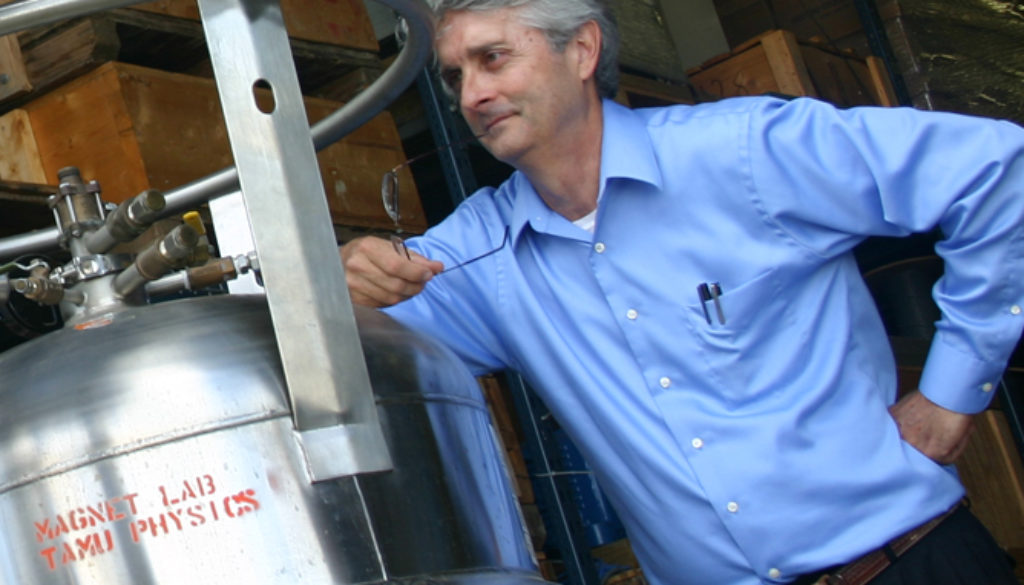Texas A&M Professor Realizes Life Purpose, Global Potential Through Physics
COLLEGE STATION —
EDITOR’S NOTE: Last November, Texas A&M University President Michael K. Young announced a new $4 billion comprehensive campaign, Lead by Example, that will cement Texas A&M as a world leader in solving great global challenges. The following story largely is excerpted from the version that originally appeared in the Texas A&M Foundation’s 2005 Annual Report, re invest. It’s a piece that illustrates not only the ties between fundraising campaigns (in this case, One Spirit One Vision, which raised more than $1 billion), but also the fact that much of Texas A&M’s success is rooted in a past that figures prominently in its present and future success. #TAMUleads
# # # # # # # # # #
Solar power. Transuranics. Breast cancer. Molten salt. Magnets.
The common denominator among this eclectic list of topics is a rather uncommon renaissance man, Dr. Peter M. McIntyre, who holds the Mitchell-Heep Chair in Experimental High Energy Physics within the George P. and Cynthia Woods Mitchell Institute for Fundamental Physics and Astronomy at Texas A&M University.

McIntyre, working in his lab with former graduate student Kyle Damborsky and former postdoctoral researcher Feng Lu. (Credit: Robb Kendrick / Texas A&M Foundation.) 
McIntyre’s Accelerator Research Laboratory group, pictured in 2013 with the magnet for the Superconducting Super Collider (SSC). Despite the fact that the Texas-based project fell victim to Congressional budget cuts, McIntyre says it gave him invaluable experience at figuring out how to connect science with the political leaders who could bring it to fruition. “That’s how things can happen, and that’s how they do happen in this world,” he said. “It takes persistence and ingenuity in trying to find a way.” (Credit: Robb Kendrick / Texas A&M Foundation.) 
Tintype portrait of McIntyre, commissioned by the Texas A&M Foundation for its 2005 Annual Report. Learn more about the process via National Geographic. (Credit: Robb Kendrick / Texas A&M Foundation.)



The post Texas A&M Professor Realizes Life Purpose, Global Potential Through Physics appeared first on College of Science.
